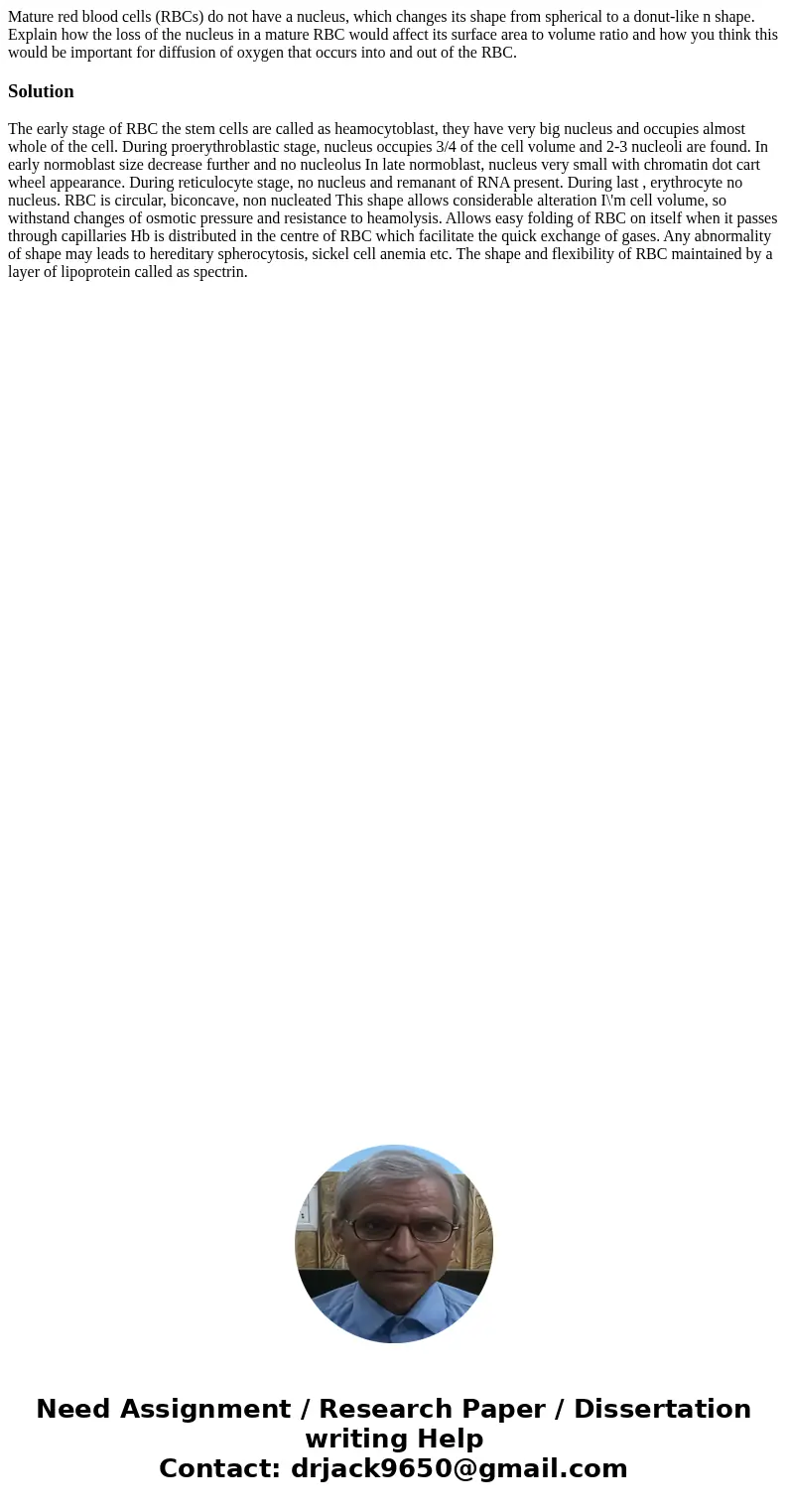Mature red blood cells RBCs do not have a nucleus which chan
Mature red blood cells (RBCs) do not have a nucleus, which changes its shape from spherical to a donut-like n shape. Explain how the loss of the nucleus in a mature RBC would affect its surface area to volume ratio and how you think this would be important for diffusion of oxygen that occurs into and out of the RBC.
Solution
The early stage of RBC the stem cells are called as heamocytoblast, they have very big nucleus and occupies almost whole of the cell. During proerythroblastic stage, nucleus occupies 3/4 of the cell volume and 2-3 nucleoli are found. In early normoblast size decrease further and no nucleolus In late normoblast, nucleus very small with chromatin dot cart wheel appearance. During reticulocyte stage, no nucleus and remanant of RNA present. During last , erythrocyte no nucleus. RBC is circular, biconcave, non nucleated This shape allows considerable alteration I\'m cell volume, so withstand changes of osmotic pressure and resistance to heamolysis. Allows easy folding of RBC on itself when it passes through capillaries Hb is distributed in the centre of RBC which facilitate the quick exchange of gases. Any abnormality of shape may leads to hereditary spherocytosis, sickel cell anemia etc. The shape and flexibility of RBC maintained by a layer of lipoprotein called as spectrin.
 Homework Sourse
Homework Sourse